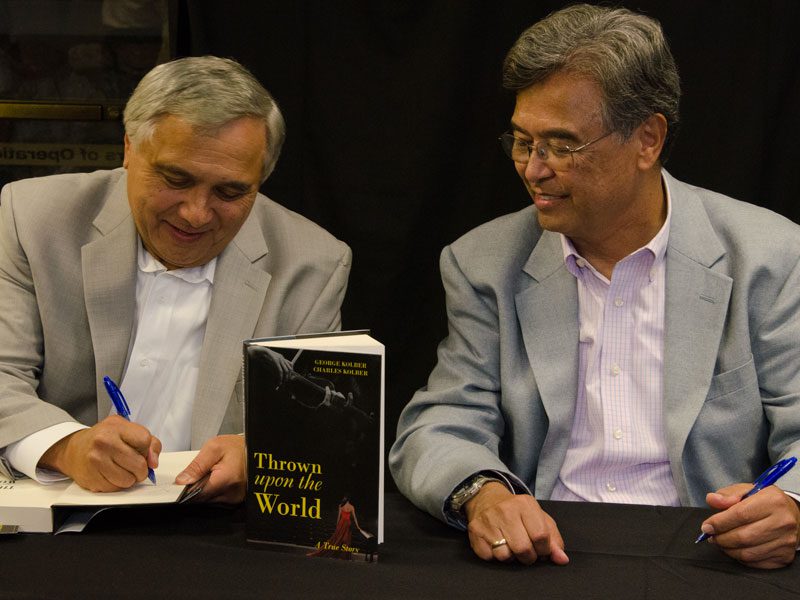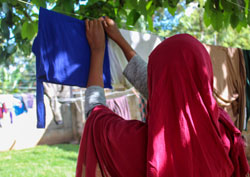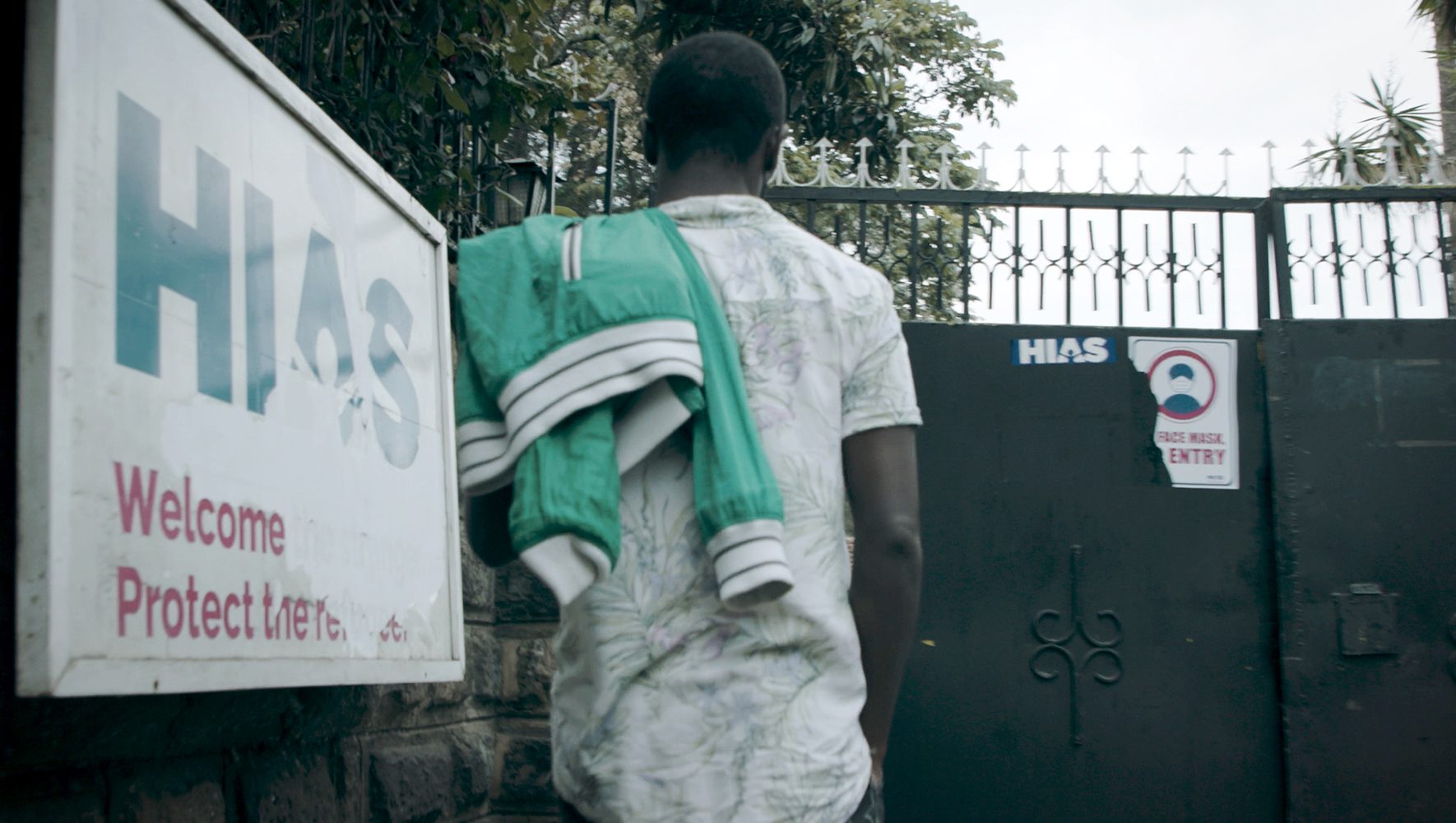A Story of WWII Love, Refugee Life, and Escape (with Help from HIAS)
By Sharon Samber
HIAS.org
Nov 13, 2018

George and Charles Kolber at a book signing. (Photo courtesy of George Kolber)
Everyone has a story, the saying goes. But some people’s stories not only explain their own family’s history, but function as a universal kind of storytelling. You read their story and you understand the world, and maybe even your own life story, in a different way.
Such is the case of George and Charles Kolber, who wrote their family saga. The brothers, now 68 and 69, were raised in the United States but the tale of what happened before they were born is what led them to write a book. They start with the tale of their grandparents: the Kolbers’ flight from the Nazis in 1938, their incredible journey to Shanghai, and then the intertwining with the Chen family, who had also fled to Shanghai from Zhenru after having been persecuted in China by the Japanese.
“Not everyone knows that Shanghai was a destination for WWII refugees,” the authors explained to HIAS. “Yet two families from different regions and backgrounds made a courageous journey to that very city for an identical purpose—survival.”
Their book, Thrown Upon the World, reads not unlike a cross between a Shakespearean tale of star-crossed lovers and a history of the war-torn countries of Europe and Asia. It shows how the worldwide changes affected people on a personal scale, as families’ legacies and futures were altered forever, and notes the important role of HIAS.
The brothers write of their grandparents, Josef and Eva, and their escape from Vienna to Shanghai, the only place in the world at that time that was open to Jews without a visa. In Austria, the Kolbers were a well-to-do family, owners of a sewing factory and a women’s retail shop. But in 1938 the Nazis began their roundups of Jewish leaders, sending them to concentration camps, and the Kolbers saw no other way but to leave.
Hiding the family valuables inside crates with their sewing machines, Josef and sons Walter and Dolfie boarded a ship, while Eva and daughter Lilly took a 7,600-mile overland rail route, and the family reunited months later. The Kolbers escaped Europe before Kristallnacht, the massive pogrom in November 1938 that forced many Jews to escape and which eventually boosted the German-Jewish population in Shanghai to upwards of 20,000.
At about the same time as the Kolbers were adjusting to refugee life in China, the Japanese had invaded other areas of China, and one politically powerful family, the Chens, was also forced to flee to Shanghai. It was there that the children from these two families–Walter, a talented violinist, and Chao Chen, a gifted pianist–would meet by chance at the Shanghai Music Conservatory. Despite societal and family pressures, they fell in love and married in 1946.
Eva and Josef stayed in Shanghai until the end of 1948 and then emigrated to Israel, but Walter and Chao Chen went to Europe and were relocated into a displaced persons refugee camp near Vienna. Walter and Chao Chen had four sons: Harry, Charles, George, and Michael; Charles and George were both born in Vienna. Eventually, under the 1948 Displaced Persons Act, Walter arranged for his family to move to the United States in 1950, to New Jersey.
Walter did manage to bring three sons to the U.S. with him, but then found he could not care for them. The boys were placed with different families (George in Newark, Charles in Union), and the Newark Jewish Family Services got the brothers together from time to time, especially at summer camps.
According to the authors, the HIAS hand-on coordinator, Lillian Cohen, who helped them out of Austria and into the United States, took a special interest in the family.
George and Charles are also thankful to HIAS for providing records as they researched their story. Their collaborative effort–as they like to say, a one-year project that took them three years–brought the brothers closer together. The Kolbers have received numerous heartwarming letters from readers, many saying the book inspired them to share their families’ stories.
Readers have also thanked the Kolbers for giving them an understanding of this part of history, especially how Jews were being victimized by the Nazis in the same moment in time as the Chinese were suffering under Japanese rule.
“People don’t realize that many Jews were tortured, imprisoned, or died just while waiting for asylum,” the Kolbers note. “HIAS arranged for legal immigration to the USA which included finding sponsors, bonding, ensuring job training, and housing.” In the book, the authors describe the lengths to which HIAS went to get hundreds of thousands of Jews to the U.S.
The extended Kolber family and friends all knew bits and pieces of the story, but the book gives a full perspective of not only how the family got to America, but the history behind what had brought them.
“Actually, we waited too long to tell this important story,” the Kolber brothers said.





